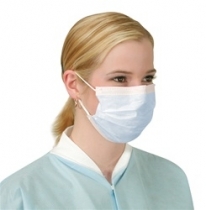Often referred to as HAI in the medical industry, hospital-acquired infections are a serious and important matter in many medical facilities. A hospital-acquired infection (also known as a nosocomial infection), is when a patient is admitted into a hospital for a reason other than that infection. According to the CDC (Centers for Disease Control and Prevention), “approximately 1 out of every 20 hospitalized patients will contract an HAI.”
How are these infections caused? Hospital-acquired infections take place in a medical setting caused by viral, bacterial and fungal pathogens. These infections are acquired by patients while they are receiving medical treatment. An infection can start anywhere in the a patient’s body. Hospital-acquired infections can be developed from surgical procedures, inhaling airborne germs through nose or mouth, urinary tract infections, pneumonia, wound infection, contracting staph infections, etc.
What can your hospital do to prevent these infections from occurring? Prevention is key! Many hospitals and medical centers have instilled infection control programs to help prevent the spread of infection. Taking extra precaution in high risk surgical procedures such as urinary catheterization is important. Sterile supplies and equipment are always a good idea to prevent cross-contamination. A few basic infection control tips: thorough hand washing, using disposable supplies, wearing proper protection apparel, using sterilized medical instruments, etc.
Some patients are at greater risk than others for example, children, elderly and those with weak immune systems. Taking greater precaution around these patients is important.
Hospital-acquired infections are preventable with proper infection control standards. Have a questions about this post? Let us know in the comment box below.


Leave a Reply